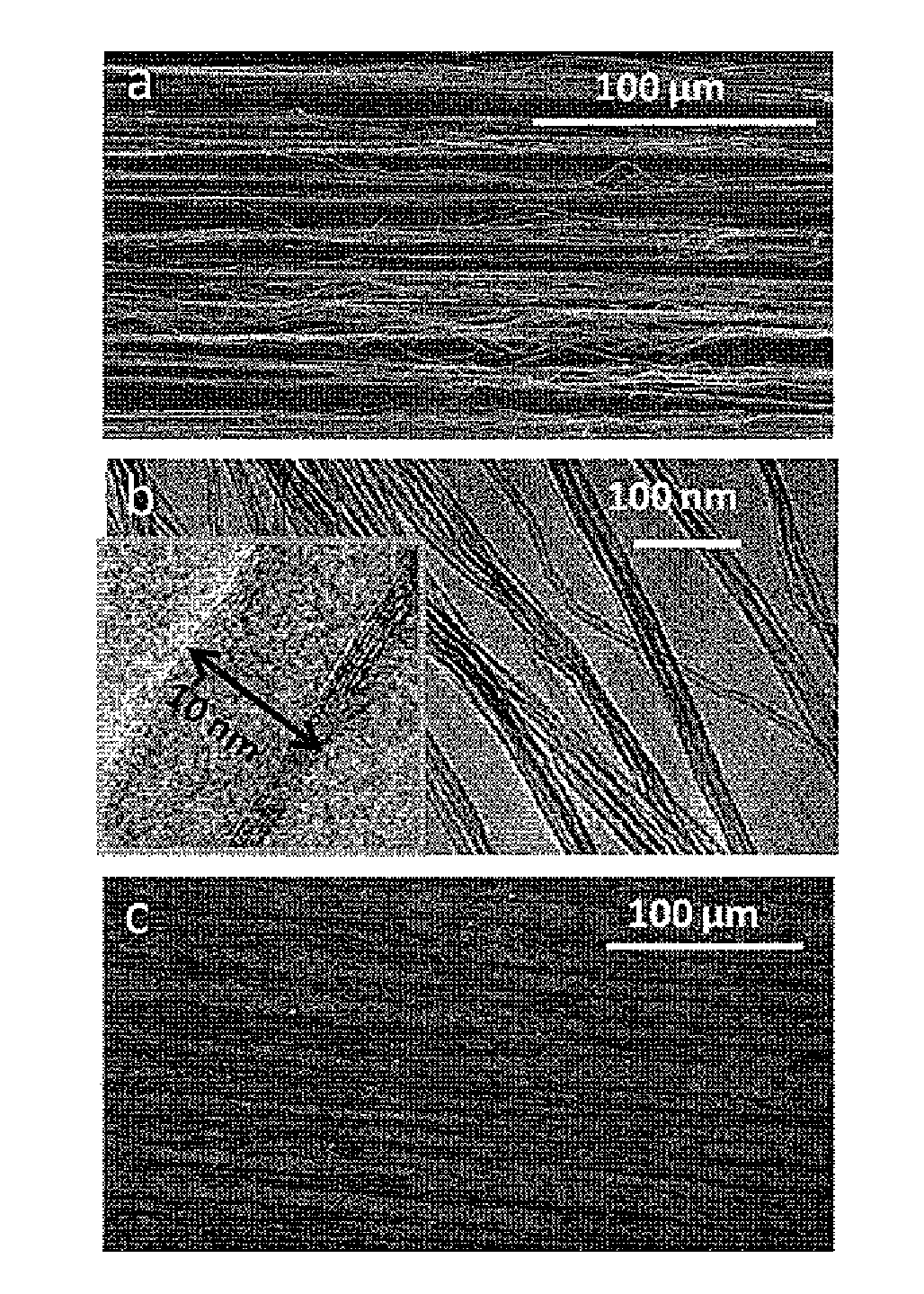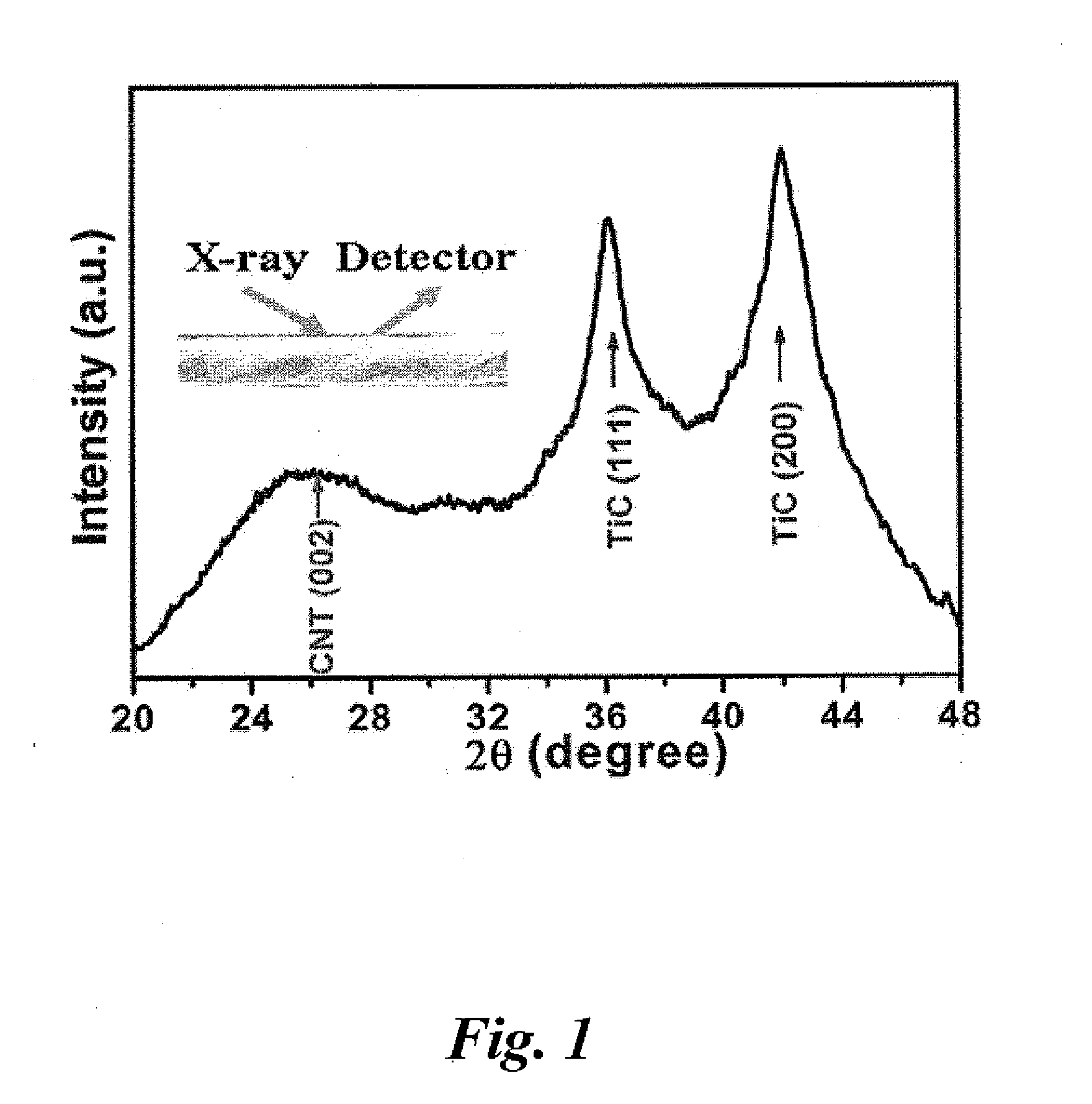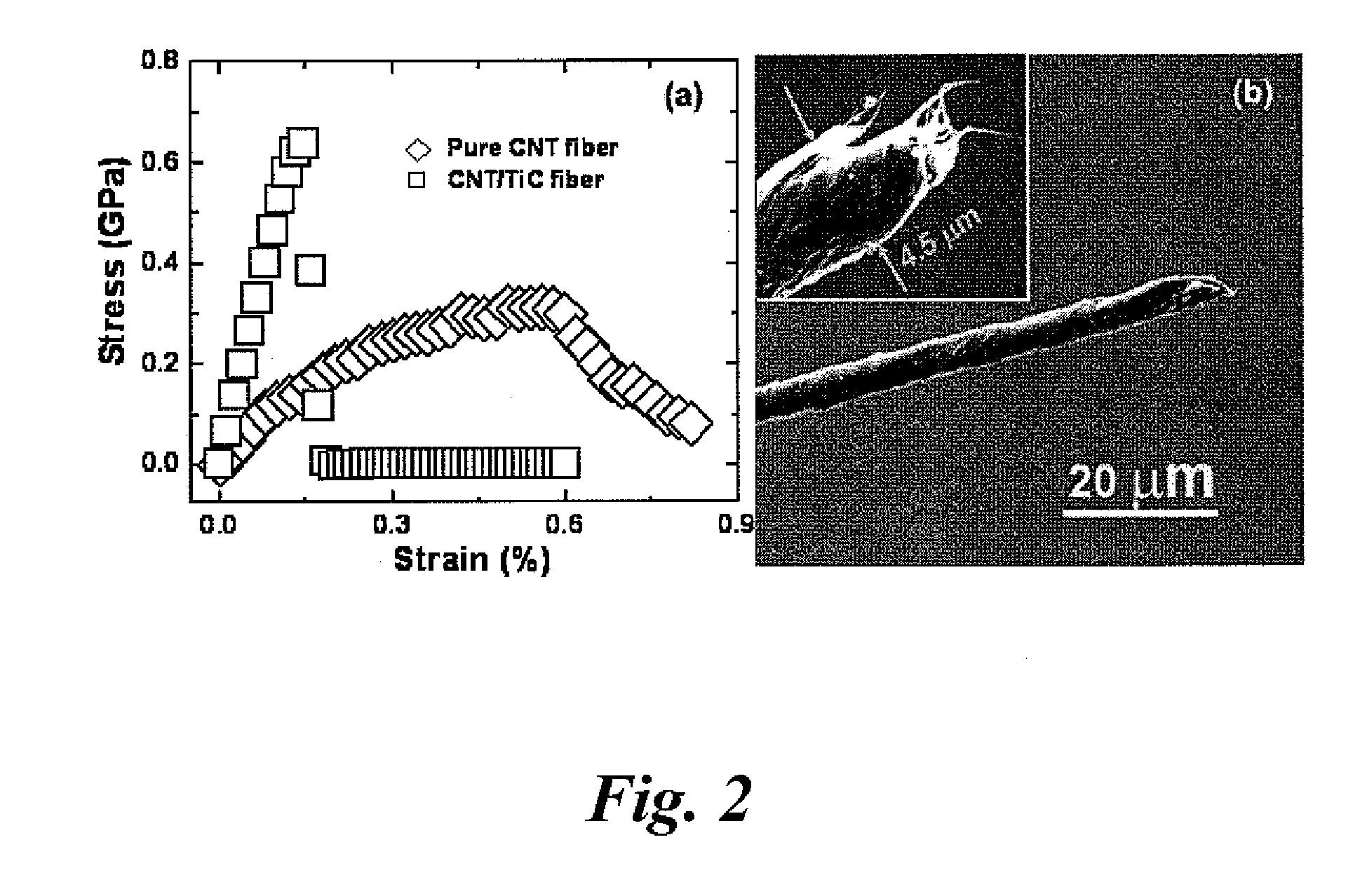Carbon nanotube/metal carbide composites with enhanced properties
a technology of carbon nanotubes and metal carbides, applied in the field of carbon nanotube/metal carbide composites, can solve the problems of low mechanical strength of fibers and low electrical conductivity
- Summary
- Abstract
- Description
- Claims
- Application Information
AI Technical Summary
Benefits of technology
Problems solved by technology
Method used
Image
Examples
example 1
[0043]A precursor solution for preparing titanium carbide embedded CNT composite fibers was prepared as follows: 12 grams (“g”) of hexafluorotitanic acid (H2TiF6, ALDRICH, 99.9%, 60% in water) was added to 7.5 g of a solution of polyethyleneimine (“PEI”) (purchased from BASF CORPORATION, Clifton N.J., used without further purification) and 40 mL of water purified to 18 MΩ·cm using a MILLI-Q water treatment system. The resulting solution was purified by ultrafiltration, which was carried out using Amicon stirred cells and a 3,000 molecular weight cut-off ultrafiltration membrane under 60 psi argon pressure. Titanium analysis was conducted using a HORIBA JOBIN YVON ULTIMA II inductively coupled plasma-atomic emission spectrometer (“ICP-AES”) following the standard SW846 EPA (Environmental Protection Agency) method 6010 procedure. Analysis showed that the final Ti precursor solution was 496 millimolar (“mM”) in Ti.
example 2
[0044]A precursor useful for preparing niobium carbide embedded CNT composite fibers was prepared as follows: NbCl5 (>99% pure), NH4OH, and 20% HF were dissolved in water where the water was purified using the Milli-Q water treatment system. Ultrafiltration was carried out under 60 psi nitrogen pressure using Amicon stirred cells with a 3000 molecular weight cut-off. In detail, 2 g of NbCl5 were converted to Nb(OH)5 by addition of ammonium hydroxide into the solution. The Nb(OH)5 was then dissolved in 30 mL of deionized water and 7.5 mL of 20% HF. PEI was then added in 31 g aliquots (total of 3.0 g) and mixed after each addition. After stirring, the solution was placed in an Amicon filtration unit containing a filter designed to pass materials with molecular weight<3,000 g / mol. The solution was diluted 3 times to 200 mL and then purified by ultrafiltration, which resulted in a final volume of about 35 mL in volume. Inductively coupled plasma-atomic emission spectroscopy showed that ...
example 3
[0045]A precursor solution useful for preparing tantalum carbide embedded CNT composite fibers was prepared as follows: tantalum chloride was dissolved in water. Ammonium hydroxide was added, which resulted in precipitation of tantalum hydroxide (Ta(OH)5). The precipitate was rinsed with copious amounts of deionized water to remove chloride from the precipitate. The precipitate was then dissolved in 20% HF solution to form a tantalum fluoride complex. PEI was added to this solution, and afterward, ultrafiltration was carried out using Amicon stirred cells and a 3,000 molecular weight cut-off ultrafiltration membrane under 60 psi argon pressure. Inductively coupled plasma-atomic emission spectroscopy showed that the final solution was 214 mM in tantalum.
PUM
| Property | Measurement | Unit |
|---|---|---|
| depth | aaaaa | aaaaa |
| diameter | aaaaa | aaaaa |
| temperatures | aaaaa | aaaaa |
Abstract
Description
Claims
Application Information
 Login to View More
Login to View More - R&D
- Intellectual Property
- Life Sciences
- Materials
- Tech Scout
- Unparalleled Data Quality
- Higher Quality Content
- 60% Fewer Hallucinations
Browse by: Latest US Patents, China's latest patents, Technical Efficacy Thesaurus, Application Domain, Technology Topic, Popular Technical Reports.
© 2025 PatSnap. All rights reserved.Legal|Privacy policy|Modern Slavery Act Transparency Statement|Sitemap|About US| Contact US: help@patsnap.com



